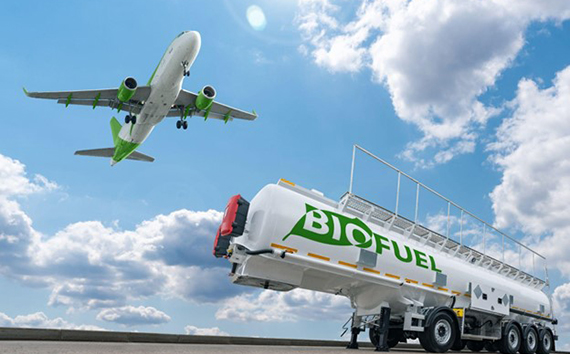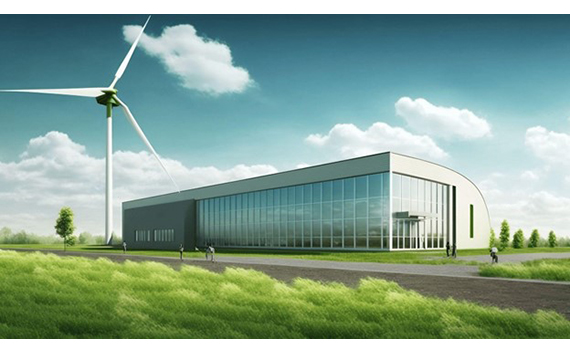Becoming a green business is an intense process that includes sharply reducing your greenhouse gas emissions (GHG emissions) and taking other sustainability actions company-wide. Sometimes, knowing what steps to take or if the targets you have in place are the right ones to becoming a net-zero business is difficult. This is where an organization like the Science Based Targets initiative (SBTi) can help.
The SBTi can help companies develop a plan for becoming net-zero and validate their actions along the way — all while focusing on accountability. What exactly is the SBTi’s aligned sustainability, how does it work, and how can it help your organization? Continue reading to learn the answers to all this and more.
What Is the SBTi Aligned Sustainability Framework?
The Science Based Targets initiative (SBTi) is a collaboration between four entities: the Carbon Disclosure Project (CDP), the United Nations Global Compact, World Resources Institute (WRI) and the World Wide Fund for Nature (WWF). It helps businesses and financial institutions set guidelines to aid them in reducing their GHG emissions.
SBTi develops climate-science-based targets that can help the world meet the Paris Agreement‘s goals — to limit global warming and climate change to 2 degrees Celsius above pre-industrial levels and ideally to 1.5 degrees Celsius.
The SBTi helps these organizations meet their emissions reduction targets by:
- Defining the best practices in climate-science-based target setting and promoting them
- Offering expert resources and technical guidance to organizations that set science-based targets to achieve their decarbonization and net-zero targets
- Organizing an expert team to perform an independent validation and assessment of an organization’s carbon emission targets
What Does It Mean to Join SBTi?
When an organization joins the SBTi initiative on sustainability, it publicly commits to reduce company-wide emissions to help slow the impacts of climate change using science-based targets. The SBTi then lists the organization on its dashboard showing its near-term targets, long-term targets, and whether or not it’s committed to producing net-zero emissions.
The primary focus is on reducing scope 1 and scope 2 emissions. While scope 3 emissions are involved in the validation process, SBTi is still reviewing its scope 3 target-setting methods and criteria to make sure they align with the SBTi Net-Zero Standard.
Scope 1 emissions are those created directly from organization-owned or controlled sources. Scope 2 emissions are indirect emissions from purchased energy. Scope 3 emissions are all other indirect emissions not covered under scope 2, such as those in the supply chain or value chain.
As a company joins SBTi and publicly commits to setting science-based carbon-reduction targets, it’s added to the SBTi dashboard as “Committed.” At this point, it has 24 months to set near-term targets — targets for the next five to 10 years — for carbon reduction based on the SBTi’s criteria. Once the SBTi has validated and assessed an organization’s carbon reduction targets, they are added to the SBTi dashboard as “Targets Set.”
Organizations that align with the SBTi Net-Zero Standard — the SBTi’s blueprint for helping organizations become net-zero emissions producers — can also set long-term science-based emissions reduction targets. These long-term targets must include the organization reducing their emissions by more than 90% by 2050 — or 2040 for the power sector.
If a company fails to submit targets within 24 months of committing, it will receive a “Commitment Removed” label on the SBTi dashboard.

What’s the Purpose of SBTi Aligned Sustainability?

The SBTi’s purpose is to aid organizations in setting emission-reduction targets based on science to help us reach the targets set in the Paris Agreement. The primary goal is to limit global temperature increases to 2 degrees Celsius above pre-industrial levels. A secondary goal is to further limit this temperature increase to just 1.5 degrees Celsius.
The SBTi assists in this process by getting the organization’s commitment to becoming a part of the low-carbon economy, then helps that organization define best practices to reduce its emissions. Once these practices are in place, the SBTi provides the technical assistance and resources needed to help the organizations meet their targets. The SBTi then assembles teams of experts to independently assess and validate their targets.
The underlying goal of the SBTi is to help companies achieve net-zero status by 2050, and it is doing so by shifting responsibility into the public sector.
But it also understands that businesses and governments must work together to make the goal a reality. Combining business ambition with government policy can create what SBTi calls “ambition loops” that can help speed up the decarbonization of all the systems in the global economy.
What Is SBTi’s Role in Sustainability?
Sustainability and climate action go hand in hand, so the SBTi has a significant role in global sustainability. As organizations work toward their carbon-reduction goals, part of those goals will likely include switching to renewable energy, such as solar, hydroelectricity, or wind turbines. This helps with sustainability by reducing our reliance on fossil fuels.
Also, some initiatives will likely include creating or sustaining carbon sinks — things that absorb carbon from the atmosphere — such as planting trees or committing to no deforestation while expanding their existing facilities. Again, this is directly tied to sustainability.
And this connection continues throughout the process of becoming net zero, including things like recycling and reuse initiatives, water conservation, power conservation, sustainable transportation, and more.
How Does an Organization Join and Participate in the SBTi?

So far, over 4,000 organizations have joined the SBTi’s aligned sustainability, and the number continues to grow. You may wonder how you can join and get the guidance needed to reduce your organization’s carbon emissions.
While the SBTi puts much of its focus and energy into companies from the highest-emitting business sectors, it welcomes organizations from all sectors. However, it does not assess carbon-reduction targets for cities, local governments, public sector institutions, educational institutions, or non-profit organizations.
To sign up to join the SBTi, head to the SBTi’s “Set a Target” page. Here, you will begin by registering online and submitting your initial decarbonization commitment letter or having the SBTi set up independent verification of your existing targets.
Small or medium enterprises (SMEs) can skip this step and go directly to the SME-specific application. SBTi defines an SME as a “non-subsidiary, independent company with fewer than 500 employees,” excluding financial institutions and oil and gas companies.
At this point, the SBTi will list you as “committed” on its website and partner websites, and your organization has 24 months to submit its decarbonization targets to the SBTi if it hasn’t already done so. Submitting your targets for validation involves completing the relevant submission form for your organization, then booking a validation through the SBTi.
Depending on the type of validation, the cost can range from $1,000 to $14,500. However, organizations in developing countries with less than $1 billion in revenue are exempt from all fees.
Once the SBTi has assessed and verified your carbon reduction targets, it will publish them on its website and partner websites one month after approval. You can choose to delay the publication up to six months. You will receive a welcome pack with tips for announcing your targets to company stakeholders.
Finally, you will disclose your organization’s emissions to the SBTi annually and monitor the organization’s progress toward its goals. You can report this through the CDP, an annual report, sustainability reports, or your company website.
What Are the Benefits of Joining the SBTi?
Working toward becoming carbon neutral in itself is beneficial to the environment in our fight against global warming, but what other benefits can an organization enjoy from joining the SBTi? Here are just a few.
Future-Proof Growth
One issue with corporate growth is that what’s legal now may not be legal in the future. However, your organization’s future growth may better align with upcoming regulations thanks to the SBTi’s guidance in assessing your emission targets and plans.
Regulation Resilience
Regulations change — sometimes rather suddenly. With a firm plan in place that the SBTi’s independent experts vet, your organization is more likely to be prepared for future climate regulations. You may not fully align 100% of the time, but you may be in a better position to comply with the head start you already have.
Investor Confidence
Investors now see carbon emissions as a material risk when choosing investments. With firm carbon-reduction targets in place, investors can be confident your organization is a safer investment than those without reduction targets.

Customer Confidence
Everything in business is all about the customer and their confidence in you. While offering a great product is critical, you can further boost confidence among the growing class of environmentally conscious customers by committing to and executing a strong decarbonization strategy with the SBTi.
Jumpstart Your Carbon Reduction With Terrapass

The Science Based Targets initiative gives organizations the guidance they need to reduce their carbon footprint by offering a proven pathway toward becoming net-zero. It also helps along the way with expert third-party evaluation and validation of a company’s targets to ensure they’re on the right path. Plus, it gives an organization and its leaders a sense of heightened responsibility by publicly tracking its commitments and progress toward those goals.
While joining the SBTi aligned sustainability plan is a great way to get on track toward decarbonization, you can supplement this through purchased carbon reductions. Terrapass has a wide range of carbon reduction credits for businesses, including those to reduce the carbon footprint of business travel and even custom solutions.
Check out Terrapass today and see how we can help lower your carbon footprint on your path to becoming net-zero emitters.
Brought to you by terrapass.com
Featured image
- SEO Powered Content & PR Distribution. Get Amplified Today.
- PlatoAiStream. Web3 Data Intelligence. Knowledge Amplified. Access Here.
- Minting the Future w Adryenn Ashley. Access Here.
- Buy and Sell Shares in PRE-IPO Companies with PREIPO®. Access Here.
- Source: https://terrapass.com/blog/sbti-aligned-sustainability/
- :has
- :is
- :not
- :where
- $1 billion
- $UP
- 000
- 1
- 10
- 2050
- 24
- 500
- a
- About
- above
- accountability
- Achieve
- actions
- added
- Adobe
- After
- again
- against
- Aid
- align
- aligned
- All
- along
- already
- also
- among
- an
- and
- Announcing
- annual
- Annually
- Another
- answers
- approval
- ARE
- AS
- assessed
- Assessing
- assessment
- Assistance
- assists
- At
- Atmosphere
- auto
- based
- BE
- become
- becoming
- begin
- beneficial
- benefits
- BEST
- best practices
- Better
- better position
- between
- Billion
- booking
- boost
- Building
- business
- businesses
- but
- by
- Calls
- CAN
- carbon
- carbon footprint
- Carbon Reduction
- Celsius
- Chance
- change
- Choose
- choosing
- Cities
- class
- Climate
- Climate change
- COM
- combining
- commitment
- commitments
- committed
- committing
- Companies
- company
- Company’s
- completing
- confidence
- confident
- connection
- conscious
- CONSERVATION
- continue
- continues
- controlled
- Corporate
- Cost
- countries
- covered
- create
- created
- Creating
- Credits
- criteria
- critical
- customer
- Customers
- dashboard
- Defines
- deforestation
- delay
- develop
- developing
- Developing Countries
- develops
- difficult
- directly
- Disclose
- does
- doing
- done
- economy
- educational
- emission
- Emissions
- employees
- energy
- enjoy
- ensure
- enterprises
- Environment
- environmentally
- evaluation
- exactly
- excluding
- executing
- exempt
- existing
- expanding
- expert
- experts
- facilities
- fails
- far
- Fees
- few
- fewer
- fight
- Firm
- Focus
- focusing
- Footprint
- For
- form
- fossil
- fossil fuels
- four
- Framework
- from
- fuels
- fully
- fund
- further
- future
- future growth
- GAS
- get
- getting
- gives
- Global
- Global economy
- Go
- goal
- Goals
- Government
- Government policy
- Governments
- great
- Green
- Grow
- Growing
- Growth
- guidance
- guidelines
- hand
- Have
- having
- head
- heightened
- help
- helping
- helps
- here
- How
- However
- HTTPS
- Hydroelectricity
- if
- in
- include
- includes
- Including
- Increase
- independent
- independently
- initial
- initiatives
- institutions
- into
- investment
- Investments
- Investors
- involved
- issue
- IT
- ITS
- itself
- join
- joined
- joining
- Joins
- jpg
- just
- Knowing
- Label
- Late
- leaders
- LEARN
- Legal
- less
- letter
- like
- likely
- LIMIT
- List
- Lists
- local
- long-term
- make
- material
- max-width
- May..
- mean
- medium
- Meet
- methods
- Monitor
- Month
- months
- more
- much
- must
- Nature
- Need
- needed
- net-zero
- Neutral
- next
- no
- non-profit
- Non-profit Organizations
- now
- number
- of
- offering
- Oil
- Oil and Gas
- on
- once
- ONE
- ones
- or
- organization
- organizations
- Other
- our
- out
- Pack
- part
- participate
- partner
- path
- perform
- Place
- plan
- plans
- Planting
- planting trees
- plato
- Plato Data Intelligence
- PlatoData
- plus
- Point
- policy
- position
- power
- practices
- prepared
- primary
- process
- Producers
- Product
- Progress
- project
- promoting
- proven
- provides
- public
- Publication
- publicly
- publish
- purchased
- purpose
- Puts
- range
- rather
- reach
- Reading
- Reality
- receive
- recycling
- reduce
- reducing
- reduction
- regulations
- relevant
- reliance
- report
- Reports
- Resources
- responsibility
- reuse
- revenue
- reviewing
- Role
- safer
- Science
- scope
- secondary
- sector
- Sectors
- see
- sense
- set
- setting
- SHIFTING
- sign
- significant
- SIX
- Six months
- slow
- SME
- SMEs
- So
- solar
- some
- Sources
- speed
- start
- Step
- Steps
- Still
- Strategy
- strong
- submission
- submit
- such
- supplement
- Sustainability
- sustainable
- Systems
- Take
- taking
- Target
- targets
- team
- teams
- Technical
- than
- thanks
- that
- The
- The Future
- the world
- their
- Them
- then
- These
- they
- things
- third-party
- this
- those
- Through
- throughout
- Tied
- time
- tips
- to
- together
- too
- toward
- track
- Tracking
- transportation
- Trees
- truck
- type
- under
- underlying
- understands
- upcoming
- us
- using
- VALIDATE
- validated
- validation
- Verification
- verified
- VET
- Water
- Way..
- we
- Website
- websites
- welcome
- Welcomes
- What
- when
- whether
- while
- wide
- Wide range
- will
- wind
- with
- within
- without
- Work
- work together
- world
- years
- you
- Your
- zephyrnet












